In winter, we often come across dog teams on the snowy paths. Several times, we have wanted to try sled dogs, without daring to take the plunge. What if this winter was the opportunity to take the plunge? We suggest you to discover the places where to start nearAnnecy.
The origins of the sled dog
The use of dogs for sledding goes back more than 4,000 years. The first traces were found on the shores of the Bering Sea, in eastern Siberia. But it was not until the beginning of the 20th century that sled dogs began to be considered a sport.
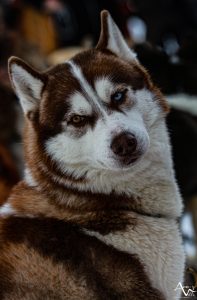 The 1900s were a time of gold rushes in Alaska, but also in Canada. During this period, gold seekers used sleds to travel in the snow. Little by little, groups of enthusiasts were formed.
The 1900s were a time of gold rushes in Alaska, but also in Canada. During this period, gold seekers used sleds to travel in the snow. Little by little, groups of enthusiasts were formed.
In Nome, Alaska, a club was even formed in 1907. The following year, the first sled dog race took place. It was called the All Alaska Sweepstakes. It was held every year and covered a distance of 660 km. The races spread throughout the world over the years.
In Scandinavia, they appeared in the middle of the 20th century with the pulka. In this variant, one or two dogs pull a sledge. The musher follows his team on cross-country skis. In France, it was not until 1979 that the first dog sledding competitions were held.
Musher, a job that requires dogs
The musher is the person who drives a dog team. Also known as a dog handler, this profession does not only consist of travelling along snowy paths accompanied by his animals. In his daily life, the musher takes care of his dogs. He feeds them, maintains them physically and mentally, and trains them to drive. At the same time, he will have to manage all the administrative aspects of his activity.
Driving dogs is a passionate job that requires good physical condition. The musher may be confronted with extreme climatic conditions, particularly if he leads expeditions in the Far North.
Saint-Gervais Mont-Blanc – Tourist Office
Where to go sledding near Annecy?
Dog sledding is an activity that has been widely developed in recent years. It was particularly popular during the winter of 2020-2021, when the ski lifts were closed. We suggest that you find out where you can enjoy this experience in the Annecy area.
Haute-Savoie
If you want to go dog sledding in Haute-Savoie, here are the resorts offering introductory courses:
- Les Gets
- Praz-de-Lys Sommand
- Megève
- Chamonix
- Avoriaz
- Les Contamines-Montjoie
- Passy Plaine-Joux
- La Clusaz
- Manigod
- Châtel
- Sixt-Fer-à-Cheval
- Abondance
- Les Carroz d’Arâches
- Saint-Sigismond
- Bellevaux
In Savoie
Haute-Savoie is not the only department offering sled dogs. Here are the Savoie resorts where you can do the activity:
- Les Arcs
- Val Cenis
- La Plagne
- Grand Revard – La Féclaz
- Courchevel
- Val Thorens
- Tignes
- Val d’Isère
- Les Saisies
- Les Sybelles
- La Norma
- Aussois
- Bessans
- Les Aillons-Margériaz
- Saint-François Longchamp
In Isère
In Isère too, it is possible to practice dog sledding. Among the resorts offering the activity, we find :
Our tips for enjoying the experience
To make the most of a dog sledding experience, we have a few recommendations for you. First of all, dress warmly. Even if you are comfortable in the sled, being cold could spoil the experience. Also, don’t forget to bring sunglasses. If you stay without them for too long, you risk burning your eyes.
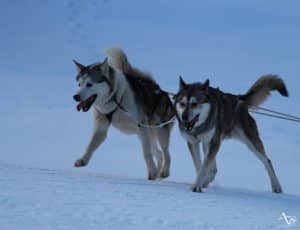
If you have the opportunity, do your outing the day after a snowfall. The landscape will be all the more beautiful with snow-covered fir trees. You will feel as if you are travelling to Lapland.
At Christmas, we recommend that you experience it at night. You will enjoy the magic of this period even more.
The most important commands to know
Dogs in harness only respond to the commands of the musher. If you are doing an introduction to sledding, you will need to learn some basic commands:
- Go
- Left
- Right
- Straight ahead
- Stop
Note that the words may change depending on the mushers.
Dog breeds suitable for sledding
If you have ever come across sleds, you will have noticed that not all dogs are the same. Several breeds are used for sledding, because of their abilities. Here are the most important ones.
The Greenlander
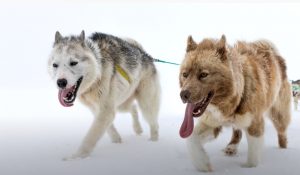 Genetically, the Greenlander is close to the wolf. Appreciated for long expeditions, it offers a good compromise between endurance and speed. Popular with the Inuit, they were also loved by the Vikings. Although the Greenlander is one of the oldest dog breeds, it is still difficult to find in France.
Genetically, the Greenlander is close to the wolf. Appreciated for long expeditions, it offers a good compromise between endurance and speed. Popular with the Inuit, they were also loved by the Vikings. Although the Greenlander is one of the oldest dog breeds, it is still difficult to find in France.
The Siberian Husky
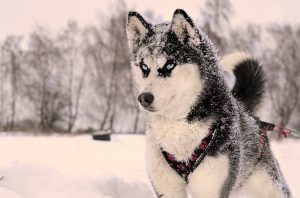 The Siberian Husky is certainly the dog breed that will speak to the greatest number of people. This working dog particularly appreciates the great cold. Resistant and fast, the Husky likes to pull. Today, you will often see them in carriages. In 1925, the breed became famous for saving the city of Nome from diphtheria.
The Siberian Husky is certainly the dog breed that will speak to the greatest number of people. This working dog particularly appreciates the great cold. Resistant and fast, the Husky likes to pull. Today, you will often see them in carriages. In 1925, the breed became famous for saving the city of Nome from diphtheria.
The Samoyed
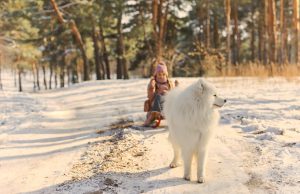 This teddy bear-like Nordic dog can be used for carriage driving. However, you won’t see them taking part in races, as speed is not their forte.
This teddy bear-like Nordic dog can be used for carriage driving. However, you won’t see them taking part in races, as speed is not their forte.
Very confident towards humans, but also very playful and not very aggressive, the Samoyed is perfect for sledding initiations.
The Yakutian Laika
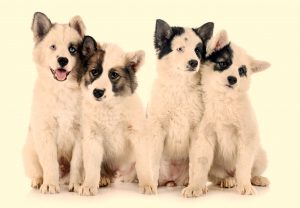
The Yakutian Laika is a breed that is not very common in France. However, it is very popular with mushers. These so-called primitive dogs adapt perfectly to winter weather conditions and will always be up for a sport session. Nevertheless, they have a strong hunting instinct and their education must be well done.
The European Sled Dog
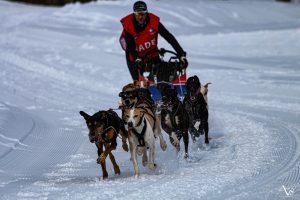
The European Sled Dog is also known as the Eurohound. This dog is a cross between Braques, Pointers and Alaskans. Although they are not as well-coated as Huskies, Eurohounds are particularly popular with mushers because of their abilities. They perform well in sprint races.
The composition of the team
In this discipline, a team must consist of at least two dogs. There is no set maximum. In some races, for example, ten dogs can start. This will depend on the rules, but also on the choices of the driver. In general, a sled is composed as follows:
-
The leader dogs. They are the ones who respond to the musher’s orders. They set the pace for the rest of the team, as well as the direction. They must also know how to keep the central line taut in order to avoid knots as much as possible.
-
Swing dogs. These dogs are located behind the leaders. Their role is to assist them when the leaders are tired or have doubts.
-
The team dogs. These are the bulk of the team, as their number can vary from 2 to 6 or more.
-
The wheel dogs. Because of their power and morphology, they are placed as close to the sled as possible. They are the ones who will be in charge of starting the sled and supporting its load.
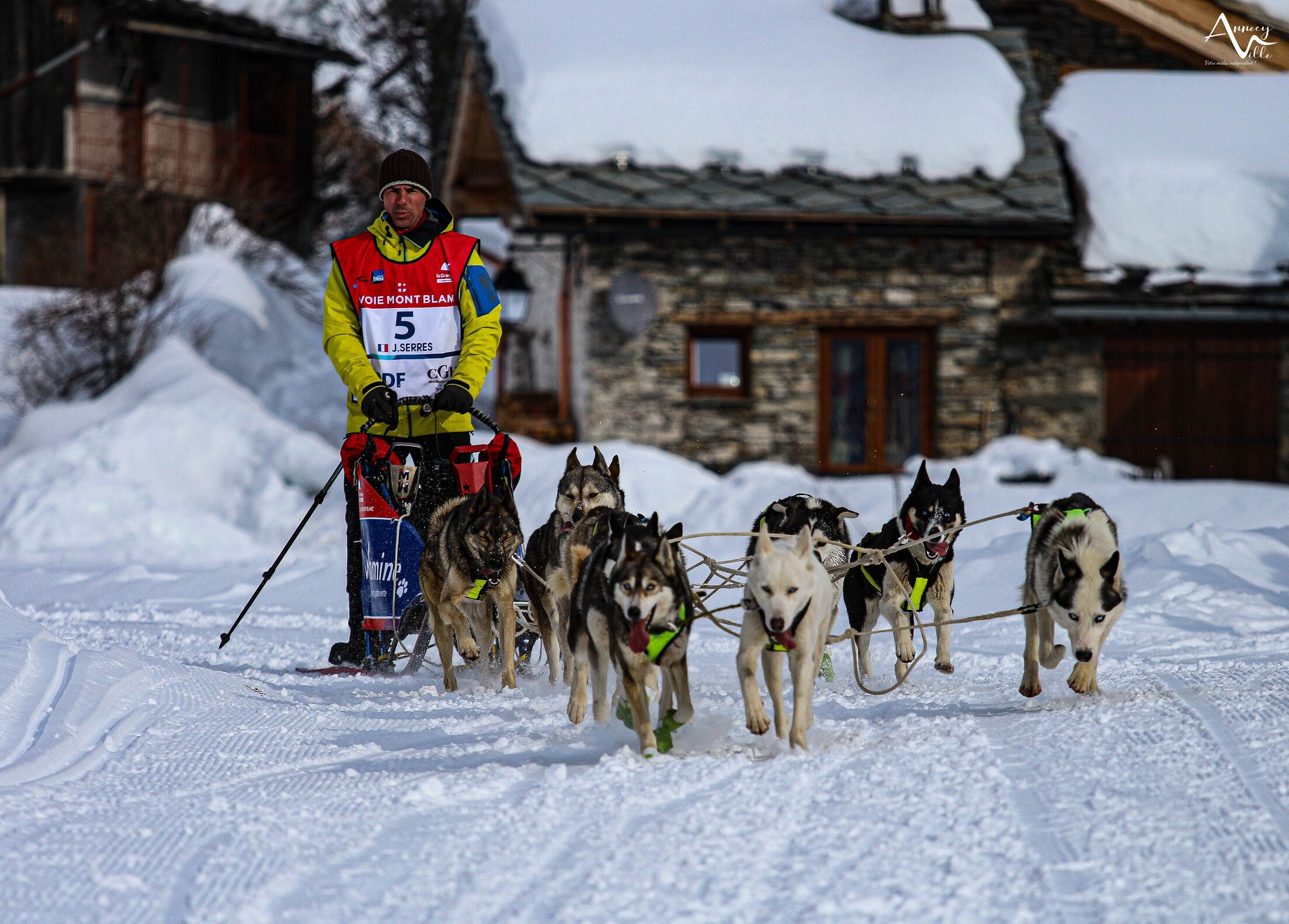
The composition of the pairs, a crucial point
The composition of the pairs in a team is a crucial point. It has a direct impact on how well it works. For example, there is no point in pairing two dogs that do not get along. On the other hand, pairing an experienced dog with a young dog can be beneficial. The first dog will teach the second dog the job and will have a formative role.
Sled dog races
Today, there are three types of races in the discipline:
-
The sprint race. These sprint competitions usually take place over a weekend in two or three rounds. The speed reached by a team can easily exceed 40 km/h.
-
The long distance race. For the most important ones, they require to cover more than 1,000 kilometres. Stages are imposed, the dogs cannot run for more than 24 hours at a time. The best known is the Yukon Quest, which is 1,648 km long.
-
Stage races. These can last several weeks. Every day, a different stage is run than the day before. The first was created at the end of the 20th century in the Italian and Austrian Alps. It was the Alpirod, which was later transformed into the Alpentrail.
La Grande Odyssée, a race not to be missed
La Grande Odyssée has, over the years, become an unmissable event in Haute-Savoie and Savoie. It was born from the meeting between Nicolas Vanier and Henry Kam. Their objective was to revive sled dog races in Europe. This has been achieved as La Grande Odyssée is now considered as the most complex competition in Europe. It takes place in three departments: Haute-Savoie, Savoie and Isère. The stages always start in a ski resort.
In a few figures, La Grande Odyssée is :
- 66 mushers
- More than 100 handlers
- 10 ski areas
- 600 dogs
- 80 members of the organisation, plus many volunteers
- 350 km of runs
- 12,000 metres of vertical drop
La Grande Odyssée
















